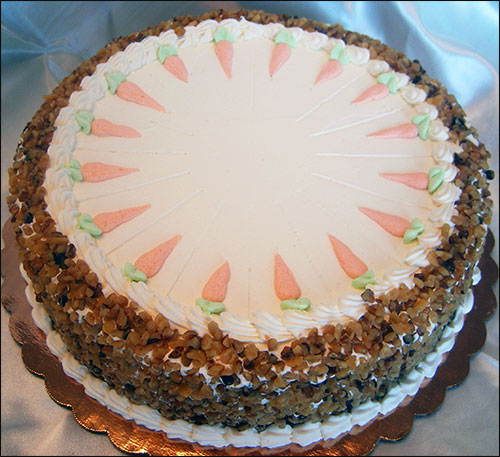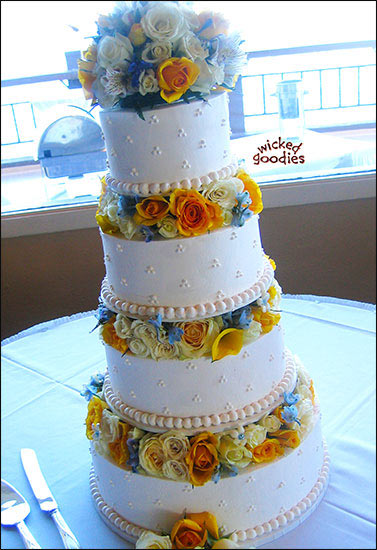Cake Frosting Basics
page 30 of 50
Don’t Fuss
When frosting a cake, don’t bother fussing over any mistakes that won’t show once the project is complete. For instance, the buttercream on the sides and top edge of a carrot cake that are rimmed with walnut pieces will never be seen in the end, so those parts of the cake do not need to be frosted as precisely.

While the frosting surface is still soft, you can press anything into it; toasted coconut, chocolate shavings, chocolate curls, slivered almonds, or cookie crumbs can all be used to decorate and cover up the sides of a cake so that the only part you need to frost smoothly is the top face.
Conversely, since the top face of some wedding cake tiers (like in the photo below) don’t show once a cake gets stacked, you can feel free to leave spatula marks in the frosting in those places as no one will ever know.
Multi-Tiered Cake Frosting
When making a multi-tiered cake, rotate the tiers in and out the fridge in the same order throughout the stages of frosting and decorating so that each one has a chance to get chilled again before the next stage begins.
Start by frosting the middle tier/s first, as those are usually the easiest sizes to manage (middle tiers are typically 7”, 8”, or 9”). Then, frost the largest tier. End with the smallest tier. This will help you get your hands acquainted to the frosting and decorating motions before you tackle the more difficult and noticeable tiers, namely the top and bottom ones.
page 30 of 50





I have gotten here so far for tonight. Very helpful info. I could just keep on reading!!!!